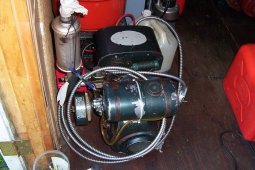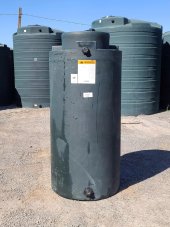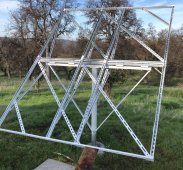My wife and I have built our 600 SF off grid cabin in Northern Maine and are looking for input on setting up and selecting replacement batteries.
We only go up on a few weekends a month and the place is unheated during that time. The solar system and batteries are in an unheated shed.
Here's our current setup:
4) Canadian Solar 255W panels on our shed roof at a 30 degree angle, facing due south with no shadows as we are in the middle of a field
Outback Power FM80 SCC
Outback Power VFX 3524 3500W inverter
2) 12 V 200AH AGM batteries in series, these are at least 6 years old
Honda 1000 W generator
My issue is fairly short battery capacity I'm guessing due to the age of the batteries and the lack of insulation/heat as they are in our shed there.
We recently moved these from another off grid location that was only used in the summer with very minimal loads so we never had to think much about the setup. It fired up and ran fine with the default Outback Power settings so I didn't mess with anything.
So after doing my load calculations we came in at 1000Wh/day, I'd like to build in some extra capacity and round that up to 1250. Our biggest load is a pellet stove and several LED lights. The stove and fridge are both propane. We can also run the cabin off the Honda generator to let the batteries charge during the day and swap over to inverter at night to allow the pellet stove to cycle during the night. On the last trip the batteries kicked off during the night when the stove was running and filled the place with smoke.
After reading this forum and watching Will's YouTube channel, I think my first step is to build an insulated battery box and install a few RV heaters to keep things toasty.
My next step is to replace the batteries and this is where I need help. Since this site is very cold in the winter, do I stay with the AGM or is now the time to make the jump to LiFePO4?
I don't mind spending the money to get what is best but as a rookie I don't want to make the wrong decision.
Thanks for the great forum!
James
We only go up on a few weekends a month and the place is unheated during that time. The solar system and batteries are in an unheated shed.
Here's our current setup:
4) Canadian Solar 255W panels on our shed roof at a 30 degree angle, facing due south with no shadows as we are in the middle of a field
Outback Power FM80 SCC
Outback Power VFX 3524 3500W inverter
2) 12 V 200AH AGM batteries in series, these are at least 6 years old
Honda 1000 W generator
My issue is fairly short battery capacity I'm guessing due to the age of the batteries and the lack of insulation/heat as they are in our shed there.
We recently moved these from another off grid location that was only used in the summer with very minimal loads so we never had to think much about the setup. It fired up and ran fine with the default Outback Power settings so I didn't mess with anything.
So after doing my load calculations we came in at 1000Wh/day, I'd like to build in some extra capacity and round that up to 1250. Our biggest load is a pellet stove and several LED lights. The stove and fridge are both propane. We can also run the cabin off the Honda generator to let the batteries charge during the day and swap over to inverter at night to allow the pellet stove to cycle during the night. On the last trip the batteries kicked off during the night when the stove was running and filled the place with smoke.
After reading this forum and watching Will's YouTube channel, I think my first step is to build an insulated battery box and install a few RV heaters to keep things toasty.
My next step is to replace the batteries and this is where I need help. Since this site is very cold in the winter, do I stay with the AGM or is now the time to make the jump to LiFePO4?
I don't mind spending the money to get what is best but as a rookie I don't want to make the wrong decision.
Thanks for the great forum!
James







